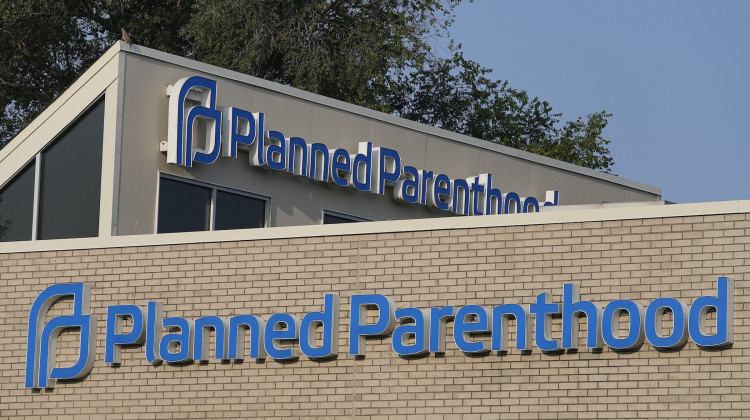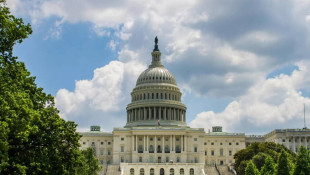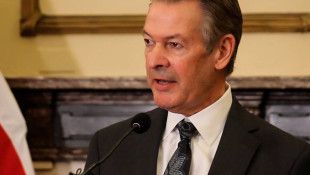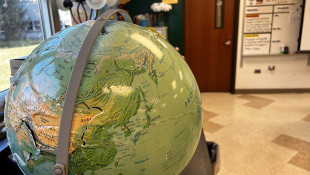
In 2022, Indiana hospitals lost $72 million. Beacon Health System recorded a $14 million loss.
FILE: Justin Hicks/IPB NewsIndiana’s hospital leaders say that they have been operating in the red in 2022 due to inflation and rising labor costs. And they are worried that proposed legislation to address rising health care costs could push them deeper into financial stress.
The Indiana Hospital Association shared a new financial analysis of the state’s hospitals and health systems, which shows resources have been stretched thin since the start of the pandemic. Last year was the toughest financially since the start of the pandemic, and some smaller hospitals said they are losing millions of dollars and worried about potential closures.
“I think there's some awareness of the challenges, maybe, that our rural hospitals face, but our urban safety net hospitals are also under great strain,” Brain Tabor, president of the Indiana Hospital Association, said during a press conference Wednesday.
According to the report, in 2022, Indiana hospitals lost $72 million. It’s the first time hospitals experienced negative operating income since the beginning of the pandemic. The hospitals’ total operating income fell $1.2 billion below pre-pandemic levels. This has led to a decline in their cash reserves –– commonly referred to as days cash on hand –– compared to 2021.
Kreg Gruber of South Bend-based Beacon Health System said that the hospital system has recorded a $14 million loss in 2022.
“This is the first loss in our history,” Gruber said. “Normally we operate on 2 to 4 percent margins.”
Hospital representatives said that these grim financial prospects are due to many factors, chief among them the increase in operational expenses to pay for staffing and medical supplies.
Carol Dozier, CEO of Norton King’s Daughters’ Health and the chair of the Indiana Hospital Association, said that her southeastern Indiana hospital has seen a 1,000 percent increase in dollars spent on contract labor between 2021 and 2022 to make up for staffing shortages due to COVID infections and quarantine among their health care providers.
This has been coupled with a decrease in several revenue streams such as elective surgeries, which had to be put on hold multiple times during the height of the pandemic as intensive care units filled up with COVID patients.
The release of this report comes as Republican state lawmakers continue to discuss proposed House and Senate bills to tackle rising health care costs in Indiana. Some of the bills look at hospitals’ billing practices as a way to chip away at the state’s above-average health care costs.
For example, HB 1004, authored by Rep. Donna Schaibley (R-Carmel), seeks to penalize nonprofit hospitals that charge more than 260 percent of the federal Medicare reimbursement rate for a health care service. This provision excludes rural hospitals.
HB 1004 and SB 6, authored by Sen. Ed Charbonneau (R-Valparaiso), also would eliminate a billing practice known as a “facility fee.” These fees are typically charged for health care services provided in a hospital setting for services that are provided at offshoot facilities like independent clinics. This practice leads to inflated prices of some routine services.
Gloria Sachdev, CEO of the Employers Forum of Indiana, said this practice has become rampant as big health systems have started to “vertically integrate.”
“They're buying up the supply chain, buying up independent physician clinics, labs, imaging centers and fusion clinics. So now they're all part of a really large health system,” Sachdev said.
So, services that were once provided at a certain clinic would cost more when one of the big health systems buy it because they add a facility fee. HB 1004 would require hospitals to use different forms when billing for services provided on a hospital campus versus services provided at offshoot sites.
“While this policy does not lower prices per se, you know, it does impact payment by eliminating these facility fees. So, the result is just going to be more money in the pockets of all families and employers effective immediately,” Sachdev added.
Tabor of the Indiana Hospital Association said that the policies proposed by lawmakers are punitive and would push Indiana hospitals deeper into financial stress.
Hospital representatives said that limiting the revenue streams hospitals rely on will only make it harder for some of them to sustain their operations over the coming years. Many pointed to the stagnant low Medicaid and Medicare federal reimbursement rates. Medicaid and Medicare patients represent the biggest chunk of hospital utilization, according to data from the American Hospital Association. The federal reimbursement rates for these patients usually do not cover the cost of care. Hospitals, including in Indiana, rely on charges to commercial insurance patients to make up for that.
But multiple hospitals reported that the volume of patients on commercial insurance has not returned back to pre-pandemic levels.
“We're over-reliant on the commercial payers who end up cross subsidizing, if you will, the cost of care for those other populations,” said Gruber of Beacon Health System.
Price caps as proposed in HB 1004 would negatively impact the financial health of some Indiana hospitals, said Baptist Health Floyd President Mike Schroyer.
“House Bill 1004 treats the Medicare base rate as a price cap. Medicaid only pays 23 cents on the dollar. And Medicare only pays 87 cents on the dollar. Medicaid is our lowest contract,” said Schroyer.
He said his hospital system, which serves New Albany, is running on negative margins and that this bill could cost them as much as $30 million.
“A hospital that is running on negative margins does not have excess $30 million,” he added.
Others also warned that imposing a price cap would push some hospital systems to increase charges across the board to make up for lost profit margins.
HB 1004 and SB 7 also would limit the use of noncompete agreements for physicians and to provide tax breaks for physicians who open independent practices, which lawmakers say would increase competition in the health care market and eventually lower prices.
Tabor of the Indiana Hospital Association worries that these bills would kick the hospitals hard when they are already down.
“We don't need new policies that would be punitive or harmful, for example, that would reduce hospital payments in this fragile environment,” Tabor said. “The hospitals need support at this critical time.”
He said that hospitals are committed to addressing their part by partnering with the state to find solutions that would promote equal accountability for all segments of the health care industry, not just hospitals.
Proponents of the bills, however, say that Indiana’s largest nonprofit hospital systems are floating on enough cash reserves to absorb any potential price reductions, and that other bills would look at insurers’ practices and their role in rising health care costs. Still, House GOP lawmakers say the bills are a work in progress. They have not reached an agreement on HB 1004 and will continue discussions next week.
This story comes from a reporting collaboration that includes the Indianapolis Recorder and Side Effects Public Media — a public health news initiative based at WFYI. Contact Farah at fyousry@wfyi.org. Follow on Twitter: @Farah_Yousrym
 DONATE
DONATE







 View More Articles
View More Articles



 Support WFYI. We can't do it without you.
Support WFYI. We can't do it without you.